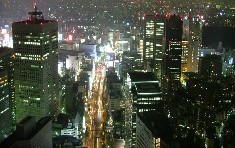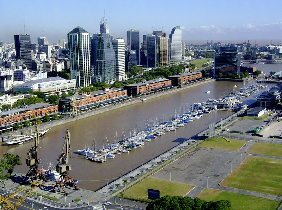Neo-Carthage
This article is a featured article. We consider it to be one of the best examples of the NSwiki community's work.
Even so, if you see a way this page can be improved, we invite you to .
| Neo-Carthage | ||||||||
|---|---|---|---|---|---|---|---|---|
|
Neo-Carthage is a Modern port-city built upon the ruins of Old Carthage, which was destroyed during the Technocrat-Caliph War It is the capital of the Carthaginian TechnoCaliphate of The Lightning Star, and houses over 75 million people. It is part of the Car-Zar Metropolis, one of the most densely populated areas in the world.
Contents
History
</div>Full Article: History of The Lightning Star
The history of Neo Carthage and Old Carthage stretches back thousands of years. In approximately 814 BC, Carthage was founded by Phoenician settlers from the city of Tyre, bringing with them the city-god Melqart. Traditionally, the city was founded by Dido, and a number of foundation myths have survived through Greek and Roman literature.
Carthage's early years were defined by a long rivalry between the landholding and maritime families. In general, due to the city's dependence on maritime trade, the maritime faction controlled the government, and during the 6th century BC, Carthage began to acquire dominance over the Western Mediterranean. Merchants and explorers established a vast network of trade, bringing wealth and power to the city-state. In the early 6th century BC, Hanno the Navigator is supposed to have sailed down the African coast, perhaps as far as Sierra Leone. Meanwhile, under a leader named Malchus, the city began a systematic conquest of both the African interior and the coastal regions.
By the beginning of the 5th century BC, Carthage was the commercial center of the region, a position it would retain until overthrown by the Roman Republic. The city had conquered the territory of the old Phoenician colonies, such as Hadrumetum, Utica and Kerkouane, and the Libyan tribes, spreading its control along the North African coast from modern Morocco to the borders of Egypt. Its influence had also spread into the Mediterranean, with control over Sardinia, Malta, the Balearic Islands and the western half of Sicily. Colonies had also been established in Iberia. In 327 BC, Mago the Explorer sailed around the southern tip of Africa to find new land. In 314, his ship returned, accompanied by three more ships filled with Indian sailors. Mago told the leaders of Carthage that he had found a sea-route to India, and he showed them a map of his journey.
In the year 307 BC, the leaders of Carthage decided to send 20 ships around Africa to colonize the new land. The colonists finally reached their destination in spring 294, and established the colony of New Carthage in what is modern day Karachi. From the original 700 colonists, the colony grew to a population of 120,000 by 260 BC The leader of the colonists, a man be the name of Balmicar, lead to the people to triumph after triumph against the native peoples.
The Great Mediterranean War

showing the location of Carthage and Neo-Carthage.
The map also shows Italy and the islands of Sicily,
Sardinia, and Corsica.
In the year 264, the Romans attacked the Carthaginian forces at Messana and triggered the Great Mediterranean War. Over the course of the next two decades, this major conflict between Rome and Carthage would determine the course of Western civilization. From 264 BC to 241 BC the war raged on.
Although Carthage was winning at the beginning of the war, Rome consistently triumphed over Carthage near the end. Although ships from the colony in South Asia came, the end of the War resulted in the end of Carthaginian power in the mediterranean and the complete destruction of the city by Scipio Aemilianus: Roman soldiers went from house to house, slaughtering the people of Carthage and enslaving any who survived. Seeing that burning the city would be a waste, the Senate decided to spare the city. Although Carthage had fallen and everyone thought Carthage was wiped out, the Colony of New Carthage lived on, and in the future would play an important role.
The Roman Era
Under Roman rule, Carthage (although not returned to it's former glory) prospered. Thanks to improved trade with the major trading power of Rome, the city was made rich and prosperous. Although Latin became the language of the government, the Punic language and culture lived side-by-side with Roman culture.
The population of the city soared to 600,000 , making it one of the Largest cities in the Empire. Carthaginian sailors quickly rose in the ranks of the Roman navy, until most of the Admirals in the navy weren't even Roman anymore. Even though it wasn't a golden age for Carthage, times were good.
The Arab Invasion
In 1062 an army of Muslim Arabs stormed the North African Coast. After battle after battle against the Roman Army, they finally conquered all of North Africa from Egypt to Libya. In 1072, they besieged and conquered Carthage from the Roman's, and esatblished a Muslim State. Unfortunatly, it soon lost all of it's land (save Carthage and most of what is Modern-day Tunisia), and by 1075 the armies of Rome were knocking at Carthage's doorstep. To make matters worse, the army had split in two: Everything North of Kassarine Pass belonged to the Islamic Republic of Greater Carthage (Capital: Carthage), and everything to the south belonged to the Lightning Star of Allah(Capital: Zarsis). To save what was left of their state(s), they offered to become protectorates of Rome. The Romans accepted, and until 1503 the Islamic Republic of Greater Carthage and The Lightning Star of Allah were nothing more than puppet-states of Rome.
Post Arab-Invasion
n 1499 traders from New Carthage land in the protectorate of the Islamic Republic of Greater Carthage, as well as The Lightning Star of Allah. By 1503 they have fueled the protectorates enough for them to rebel and join New Carthaginian Empire(which is then renamed the Islamic Carthaginian Empire of The Lightning Star). The Romans quickly invaded and from 1503-'05 wages a campaign against the former protectorates and wins. Once conquering them, he send one of his greatest generals to take over Bengal and lead an army from there, thus beginning the Great Indian War. This was a hundred year war that was fought entirely in South Asia, from 1505 to 1611. It took over a million lives, but in the end Carthage had gained a great empire, this one in South Asia.
Post Great-Indian War
When the war had ended, Carthage was returned to Carthaginian hands. From 1611 to 1723, Carthage was the capital of the largest empire on earth. However, things were about to change. When in 1723 the Parthian, Borman, and Generic empires invaded South Asia, they quickly reduced the glorious empire to rubble. Over 2,000,000 people fled to Carthage, and a distinct new culture was created. Before there had been a few Indians here and there, but now there were millions of them. The city then flourished, even though its Empire fell. Pakistan east of the Indus was still under Imperial Controll, but people still fled, fearing an invasion.
Hasdrubal the Great
Over the course of the next 231 years, Carthage was in a state of serious weakness. Governments came and went, and during a single year, 1891, more than 17 governments took power. However, this all changed when the Carthaginian Emperor Hasdrubal VIII took power in 1965. In the area controlled by Magdha(which was officially claimed by Carthage, thus meaning that the Magdha rulers were considered "rebels"), the "rebel" government had collapsed. Seizing the oportunity, the Emperor invaded Magdha and reclaimed it all by 1978. He then began a series of economic and social reforms that launched Carthage back onto the world stage.
The Destruction of Old Carthage
Carthage was once again a powerful Mediterranean city. It was the capital of a giant empire, and it was respected throughout the world. However, during the Civil War the Technocrats destroyed the city, the last stronghold of Caliph Mahmoud Al-Zoukar, thus ending the Civil War. The Technocrats, who had decided to re-build Carthage and make it better, soon began to create a new city. One of the conditions of the Peace-fire of the civil war, however, was that the Technocrats and the Caliph would not have direct influence on local politics in Carthage, so an independent Grand Duchy of Carthage was created(the Technocrats moved their council to Hannibalia, and the Caliph moved his seat to Jinnah). The Grand Duke Alphonse of Zarzis(who is the current Grand duke) led the re-construction effort, and the city has now surpased it's former glory.
Geography and Climate
The city is located between Lake Tunis and the Gulf of Carthage. It's climate is high temperatures with mild, rainy winters and hot, dry summers. It is in the mountainous north, although there are no hihg mountains very close by. There are farms in the surrounding areas, and canals criss-cross the areas right outside of the city.
Demographics
As of the census of 2005, there are 75,182,141 people, 30,566,923 households, and 14,702,567 families residing in the city. The population density is 40,696.9/km² . There are 32,150,219 housing units at an average density of 20,008.5/km². The Arabs are the largest ethnic group in the city of Neo-Carthage. The racial makeup of the city is 54.48% Arab, 5.33% Black or African, 27.92% South Asian, 0.06% Pacific Islander, 7.83% from other races, and 4.39% from two or more races.
There are 30,566,923 households out of which 22.7% have children under the age of 18 living with them, 27.4% are married couples living together, 16.4% have a female householder with no husband present, and 51.9% are non-families. 37.1% of all households are made up of individuals and 9.1% have someone living alone who is 65 years of age or older. The average household size is 2.31 and the average family size is 3.17.
In the city the population is spread out with 19.8% under the age of 18, 16.2% from 18 to 24, 35.8% from 25 to 44, 17.8% from 45 to 64, and 10.4% who are 65 years of age or older. The median age is 31 years. For every 100 females there are 92.8 males. For every 100 females age 18 and over, there are 90.2 males.
The median income for a household in the city is $59,629, and the median income for a family is $64,151. Males have a median income of $57,435 versus $52,421 for females. The per capita income for the city is $43,353. 19.5% of the population and 15.3% of families are below the poverty line. Out of the total population, 25.6% of those under the age of 18 and 18.2% of those 65 and older are living below the poverty line.
Areas of Carthage
Due to the fact that the city is quite new and was designed by professional planners, it suffers nearly none of the problems faced by older cities. The roads are wide enough, the road system works like a charm, overcrowding is not an issue(even though the city houses such a large population)It is split into four districts: The Buisiness District, the Living District, the Bay District, and the Old City.
Business District
</div>The Business District (or Downtown) of Neo-Carthage is the largest in the Carthaginian Empire, followed by the Karachi, Delhi, and Mumbai Business Districts. Even though it is in the heart of this sprawling city, it usually takes less than an hour to reach the center even from the edges of the city. It is the home of the NCSX, the headquarters of many major companies, and much more. The business district has over 300 skyscrapers, and billions of Credits flow through hands here every day.
The commute is better than that of most cities, due to Neo-Carthage's transportation system. Public transportation is widely promoted and widely used. These include methods of transportation such as Monorails, extensive subway systems, buses, taxis, and ferries (to get from the Port to the Business District).
Living District
The Living District, known as Tunis, houses over 70 million of the cities residents. Even though it has such a large population, it is such a sprawling area that it barely feels crowded. It is also home to hundreds of skyscrapers, although these are mostly for people to live in. As with other parts of Neo-Carthage, the city is constantly expanding and moving upwards. Literally. In fact, some of the worlds highest sky-scrapers are located here. To make the people of Neo-Carthage as happy as possible, the city planners included many parks for the people to rest and relax in.
The quality of life in the Living District is very good. There is power, running water, and all the basics. It doesn't stop there, however. The city offers many modern services. It has a high-speed internet provider(the state supplies every house has free 256k internet. TV Carthage supplies up to 15m for $40/m), a cable television provider(TVC, whose most expensive package gives up to 1200 channels), sports(American Football, Cricket, Soccer, Rugby, Baseball, Basketball, Lacrosse, and Ice Hockey are the main sports), and many other modern commodities.
Bay District
</div>The Bay District, which is by the Bay of Carthage, is where all the naval activities take place. The port district goes on for nearly 4 miles along the bay. There are two Imperial Navy base, 9 harbors, and hundreds of warehouses along the bay. 2 of the Harbors(the farthest on each side) are the Imperial Naval bases, the 2 that touch those two harbors(that makes 4 harbors) are for commercial ships, the four next to the one in the middle are for private ships, and the one in the middle is for hazardous cargo only.
The entire coastline was changed for this layout. It took over a year, but when Neo-Carthage opened for sea traffic, thousands of ships began to come once again. It is estimated over a Trillion Credits (1,580,700,000,000 USD) worth of cargo is in these warehouses. Needless to say, they are well guarded, and are more state-of-the art than old-fashioned warehouses.
The Old City
Not all of Carthage was destroyed in the Civil War. The outskirts of the city survived, so the area between the Business District and the Bay District is called the Old City. Here is where you can find Mosques going as old as 1200 C.E., the ancient Great Citadel of the city(from the year 1509 A.C.), the Zimar Market(an old-style market famous for it's art), and much more
The Old City could be classified as the "poor" district of Neo-Carthage. There is poverty, but the people are far from dying. If people are too poor to afford their own housing, they can go to the many Houses for the Poor. They recieve free meals, healthcare, water, and electricity. Transportation in the Old City is alot more troublesome due to the fact that the roads are insanely crazy, but the Monorail makes a stop at Zimar Station and the subway makes a stop at the citadel. You will also find alot of Babytaxis that will ferry you around for a price less of what the taxis in the main city charged. Be warned, however: Babytaxi's aren't for those with uneasy stomachs!
Law and Government
</div>Neo-Carthage, and all of Greater Carthage(Tunisia) is under the control of the Grand Duke. The Current Grand Duke, Alphonse of Zarzis, rules from the Great Citadel in the Old Carthage district. A Grand Duke is elected by the populace by plurality voting exactly 21 days after the death of a Grand Duke. The Grand Duke has the power to pass minor laws, settle disputes, and make decisions about defending the city(as long as it involves less than 10,000 soldiers and 50,000 civilians) by himself, but anything big must be decided by him and the City Sufete, which is elected every 8 years. In a crisis situation, the Sufete can give complete power to the Grand Duke, for a period up to 5 years long.
Colleges and Universities
The Neo-Carthage area is well-known for its colleges and universities.
The Imperial University of Carthage is a private university in Neo-Carthage, Greater Carthage. Few educational institutions approach the IUC's level of global name recognition. It was founded on December 8, 1613, by the Grand Prince Zafar Al-Ahud, making it the oldest institution of higher education in the Carthaginian Empre. It has an enrollment of 12,350 undergraduates and 27,000 graduates.
The Neo-Carthage Area also has many other colleges and universities, including: The Imperial War College, The Imperial Naval College, The Duchal Arts University, the North African Political University, The Grand Duchal University, and many more.
Arts and Entertainment
Neo-Carthage is considered to be a highly intellectual city. It is also considered one of the most culturally impressive cities in the world. The Old City , contains a number of ornate theatres, including the Imperial Theatre and Great Citadel (which houses one of the largest theatres on the continent). Avant garde theatres are scattered throughout the city. The Neo-Carthage Film Festival is held annually in early December.
Economy
Neo-Carthage's colleges and universities have drawn high-tech industries to the city, including computer hardware and software companies like NTECH Corporation and Delamai , as well as biotechnology companies like Mediteranean Pharmaceuticals and BioCORP. Due to the influence of the Technocrats on the entire nation, many more science business have popped up as well, such as Cloner Corp, StarBlazer Inc., and FlightCo. Other important industries include financial services, especially mutual funds and insurance. Neo-Carthage headquartered Bank of Africa helped popularize the mutual fund in the 1970s, and has made Neo-Carthage one of the top financial cities in the world.
The Port of Neo-Carthage is the largest and busiest seaport in North Africa and in the Carthaginian Empire. It is also a major seaport along the Mediterranean.

Media
The Carthage World and The Carthage Watchman are Neo-Carthage's two major daily newspapers. A local edition of The Neo, a free paper, is also available. The Carthage Chimera, The Influenial Carthaginian, and the Weekly View are weekly newspapers. As of January 2005, the Weekly View is owned by Carthage Magazine. Extra Money is a bi-weekly paper. The Neo-Carthage Independent Media Center provides alternative views. Just Rentals and Just Property are exclusive to Real Estate and are bi-weekly. The Influential Carthaginian is a biweekly "what's happening" guide to the Neo-Carthage area.
Neo-Carthage has the largest broadcasting market in Africa, with the Neo-Carthage radio market being the ninth largest in the World. Some major AM stations include talk radio ARKO 680 AM, sports/talk station AEEI 850 AM, and news radio ACZ 1030 AM. A variety of FM radio formats serve the area as well as NPR stations ACUR and AGCH.
Sites of Interest
Although Old Carthage had many famous sites, many of them were unfortunatly destroyed during the Technocrat-Caliph War destruction of the city. The few sites that do remain are:
- The Great Citadel
- The Zimar Market
- The Imperial Theatre
- The Imperial University of Carthage
Sports
Neo-Carthage is home to 8 major league sports teams.
The Neo-Carthage Megaplex is the home of two major league team :
- Neo-Carthage Helmsmen (Ice Hockey)
- Neo-Carthage Firejumpers(Basketball)
The Cricket team the Neo-Carthage Siroccos are a member of the African Cricket League and the Carthaginian Cricket League and play at Tunis Park. They are the oldest cricket team in the Carthaginian Cricket League from North Africa.
Nearby, in the Old City, is the cities Zimar Stadium, home of the:
- Neo-Carthage Elephants (American Football)
- Carthage Chariots (Baseball)
- Neo-Carthage Stormbringers (Soccer)
and the
- Neo-Carthage Militia (Rugby)
The IUC Biremes(Lacrosse) play at Mahmoud Field, on the Imperial Carthaginian University Campus.
Transportation
Airports Neo-Carthage is served by Neo-Carthage International Airport. It is 10 miles away from the city, and for good reason too. It covers over 12,800 acres, has thirty major runways, and employs an estimated 90,000 people. The airport has service to destinations on every continent, and at least one flight to every country. It is the busiest airport in the world, with 132 million passengers a year using its 79 airlines.
Roads and Highways
Unlike most cities in the world, Neo-Carthage has little or no traffic problems, which is suprising for a city of its size. The secret lies in the fact that Neo-Carthage was desinged by the best planners in the world. Neo-Carthage is a hub of Highways for North Africa, including the Numidian Highway(from Neo-Carthage to Duke Barol), the Car-Zar Highway(from Carthage to Zarzis), and the Trans-North African highway(Algiers-Al Burayqah)
Mass Transit
Neo-Carthage has every mass transit system imaginable. It has a monorail system (with 10 trains that hold 300 each) that stops at 60 stops in all four districts, a subway system capable of transporting over 40 million a day, a massive bus fleet and an even larger taxi fleet. In the old city, you can even get on one of thousands of Babytaxis. There is even a ferry that goes from the Bay District to the Business District.




